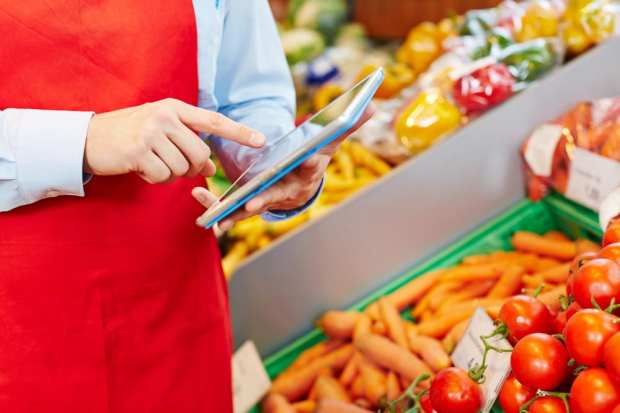Fixing The Fresh Food Supply Chain With AI

Fresh foods present a singular problem for grocers when it comes to keeping the shelves stocked. They don’t come with expiration dates stamped on, they tend to vary in terms of quality and seasonal availability, consumer preferences are highly variable and they have a relatively short shelf life. As a result, of the eight million tons of food retailers throw away annually, the vast majority are fresh foods that spoiled before they were ever sold.
That’s a lot of landfill space taken up, a lot of wasted resources and a massive economic loss for grocery retailers – totaling roughly $18 billion per year. And it is an area where nearly all grocery retailers could stand to improve: When graded in 2018 by The Center for Biological Diversity, no major retailer got an A for their efforts in managing food waste. Walmart got the highest score with a B, while the vast majority of well-known grocery chains got Cs and Ds.
The problem isn’t that grocery stores don’t want to do better. In the highly competitive low-margin race for the consumer’s grocery spend, throwing out several tons of unused and unsold food per year is far from ideal – but under-ordering fresh foods is also not an option. Fresh meats and produce are one of the main anchors keeping grocery preferences tied to the physical store, and having an adequate supply of what consumers want, when they want it, is critical for any grocer that wants to remain competitive.
When it comes to a multi-variable arena like stocking fresh groceries, the problem, according to Afresh Co-founder Matt Schwartz, lies in inventory management. Grocers large and small are still using pen and paper – or Excel spreadsheets, in particularly advanced cases – to figure out how many fresh goods they should be ordering. The millions of tons of products being thrown out each year indicates that, by and large, those back-of-the-envelope calculations are far from efficient.
Afresh aims to inject better efficiency into the product by using learning algorithms to review product data over time, and to better guide store staff on how much to order (and when) to meet likely demand while reducing overall waste.
“Fresh food is so dynamic,” Schwartz noted. “This helps us make decisions in a way that accounts for a lot of the uncertainty.”
Uncertainty that is bad for the bottom line of any grocer – but particularly the smaller ones with particularly thin margins. Throwing out a full 8 percent of the produce that one buys per year – the current industry average – takes a big bite out of grocery chains’ bottom line.
It is what moved Illinois-based grocery chain Fresh Thyme to adopt the technology for its 75 retail locations throughout the Midwest in late 2019. Freshness of produce, CEO Chris Sherrell noted in a statement, is the small chain’s central value proposition, which means it is critically interested in investing in supply chain technology that allows them to better deliver on that offering.
Ramesh Reddy, Fresh Thyme’s chief information officer, noted that Afresh’s technology delivers on two fronts: keeping the consumer experience level high while reducing bottom-line costs for the chain.
“Fresh Thyme is aggressively adopting emerging technologies like Afresh’s AI solutions to drive our digital transformation with a focus on providing unparalleled experiences for our customers,” Reddy noted. “We believe in exceeding the expectations of our guests by providing exceptionally fresh food at a great value while doing our part to reduce food waste.”
Afresh doesn’t name all of its retail partners (though they do claim that they have at least two larger partners with revenue in the billions each year), nor do they disclose specific figures on how much they save retailers. They have noted, however, that in some pilots, grocery partners have seen their food waste figures drop by as much as half.
These days, everyone wants to rule the grocery world – from online players to big-box stores to old-fashioned traditional grocery stores. And when everyone is racing for the same slice of consumer spend, every advantage is an important one.
